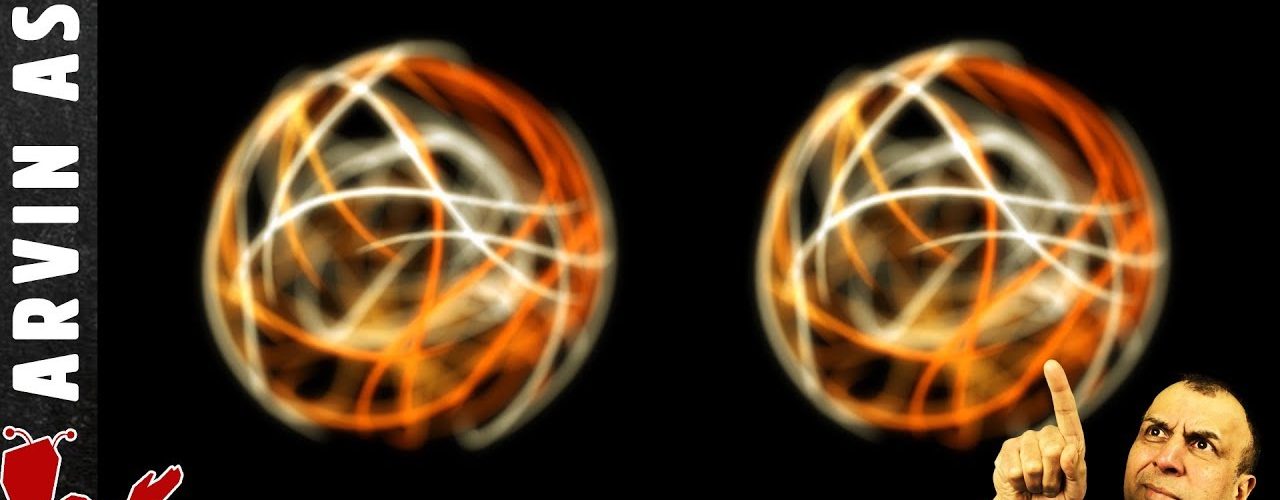What is entanglement? Mystery? There is a potential solution. But its implications are so paradigm shattering that most scientists refuse to believe it. Maybe we can’t handle the truth?
Imagine you found a pair of dice such that no matter how you tossed them, they always added up to 7. Besides becoming the richest man in Vegas, what you would have there is something called an entangled pair of dice.
You could now separate these entangled dice. You could have your friend Alice take one of these to Macau, while the other one stays with you in Las Vegas. And as soon as you rolled your dice, the other one would always instantly show a number that added up to 7.
Since this happens instantly, did your dice communicate at faster than speed of light to Macau?
Scientists can create entangled photons, for example, by shining a laser on a nonlinear optical crystal. The Entanglement means that a pair of photons act like a single entity rather than two separate particles. To understand entanglement better, you first have to accept the fact that at the quantum scale, reality is fuzzy. Reality really doesn’t know what it is, until it is measured.
This is like a single dice tossed in the air that doesn’t have a distinct face until it lands. When tossed up, it is 1, 2, 3, 4, 5, and 6 all at once. Quantum particles are similar in that they do not have distinct properties until they are measured. Particles such as a photon exists in all possible states simultaneously. But when it is measured, it is in only one state. And if the photon is entangled, this measurement of one particle causes its entangled pair to simultaneously exhibit the opposite state, no matter what the distance is between them.
Einstein disliked this idea of one particle influencing the other over long distances so much, he called it “spooky action at a distance.”
Einstein believed that the particles carried information about each other at the moment that they were entangled and were close to each other.
He thought the properties of both particles were determined locally and carried along from the beginning. So in Einstein’s view, the two dice “knew” what they would show before they were tossed.
But in the quantum world, this is impossible, because particles are fuzzy until measured.
In 1964 the Irish physicist John Bell devised a test that actually could prove whether information was encoded within the entangled particles or whether the spooky action at a distance was real.
He did this by taking advantage of the fact that in QM, measurement affects the thing you are measuring. If information was encoded at the time of particle creation, as Einstein believed, then nothing we do randomly to one particle should affect the other.
And what this test found conclusively proved that Quantum mechanics is correct – that Einstein was wrong, and that spooky action at a distance does in fact take place.
So are entangled particles communicating instantaneously?
Even if the speed was 5 miles per hour faster than the speed of light, it would violate Einstein’s theory of relativity and our picture of reality would completely collapse if this was the case.
So most scientists have come to the conclusion that no faster than light communication is taking place. So if no signal is telling these particles how to coordinate their results, what’s going on?
There is another real possibility that is not popular among scientists, but that Bell himself proposed, and that is called superdeterminism. And here is how it could solve the mystery of entanglement: Bell proposed the idea of absolute determinism in the universe, the complete absence of free will. Suppose everything in reality is predetermined. It cannot be changed. The reality that you live in has already happened. No matter what you say or do, there is no free will.
Our behavior and decisions, including our belief that we are free to choose to do one experiment rather than another, is absolutely predetermined.
If this is the case, the mystery disappears. There is no need for a faster-than-light signal to tell particle A what measurement has been carried out on particle B, because the universe, including particle A, already ‘knows’ what that measurement will be. It is predetermined.
Could this be the real reality?







